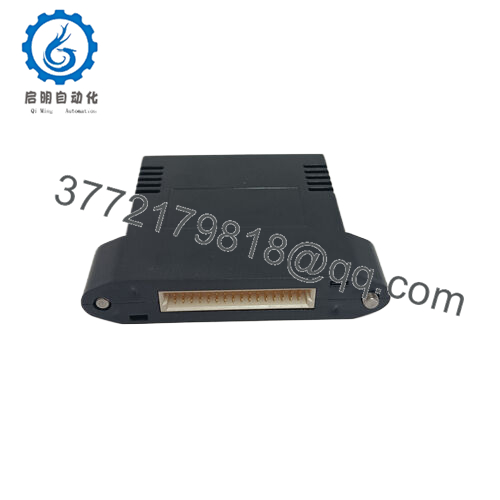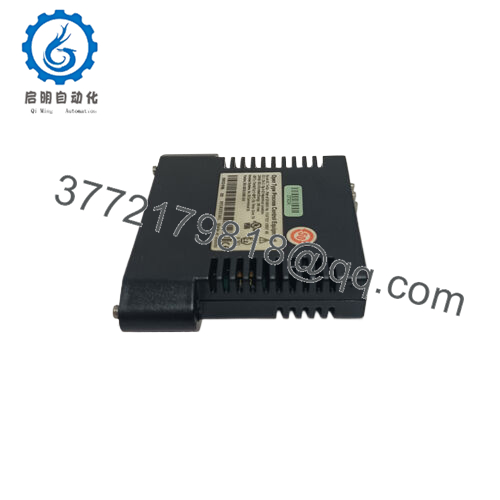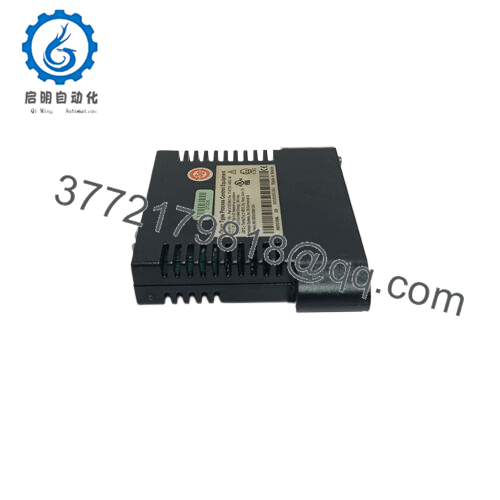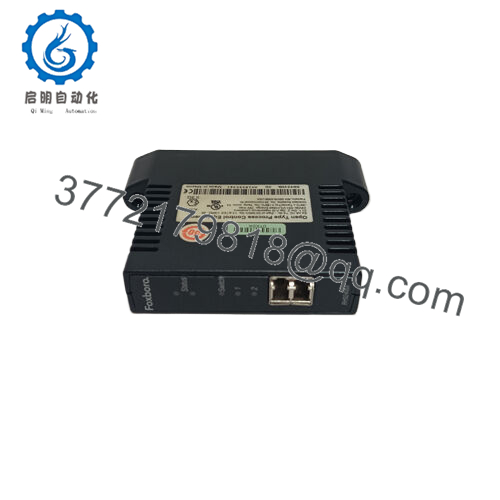Description
The Foxboro RH924WA is a high-speed Fiber Optic Network Adapter (FNA) designed for seamless integration within the Foxboro I/A Series distributed control system (DCS). It facilitates robust communication between Field Control Processor 280 (FCP280) modules and Ethernet networks using fiber optic cables, ensuring reliable data transfer in critical industrial environments such as chemical plants, power generation, and water treatment facilities. The adapter supports the proprietary FCP280 communication protocol, which is optimized for industrial automation networks requiring high bandwidth and immunity to electromagnetic interference.
Supporting data rates up to 4 Gbps, the RH924WA adapter allows for long-distance communication spanning up to 2 kilometers over single-mode fiber and approximately 500 meters over multimode fiber. This extended reach enables flexible control system layouts, reducing the need for additional networking equipment and simplifying large-scale system installations. Constructed with industrial-grade components, the module is rated for Class G3 harsh environments, making it durable against dust, moisture, and electrical noise commonly found in manufacturing and processing plants.
The adapter comes with standard SC or LC fiber connectors compatible with industrial fiber optic cabling, facilitating straightforward installation and maintenance. It features easy integration into the I/A Series system through specialized 200 Series baseplates and supports both fault-tolerant and non-fault-tolerant configurations. Visual diagnostic LEDs are provided for quick status checks and troubleshooting, enhancing operational uptime. Power consumption is optimized to maintain steady performance while minimizing heat generation, supporting long-term reliability.
| Parameter | Value |
|---|---|
| Model | Foxboro RH924WA |
| Brand | Foxboro |
| Product Type | Fiber Optic Network Adapter |
| Protocol | FCP280 Protocol |
| Data Rate | Up to 4 Gigabits per second |
| Fiber Type | Single-mode (up to 2 km), Multimode (up to 500 m) |
| Connector Type | SC or LC fiber connectors |
| Environmental Rating | ISA Class G3 (harsh industrial) |
| Operating Temperature | Industrial range (typically -20°C to +70°C) |
| Mounting | 200 Series baseplate compatible |
| Diagnostic Features | LED indicators for status and diagnostics |
| Power Consumption | Low, optimized for industrial use |
| Compatibility | Foxboro I/A Series DCS |
- RH924WA
- RH924WA
Related Modules or Compatible Units
Foxboro FCP280 – Field Control Processor module paired with RH924WA for enhanced network communications.
Foxboro RH924UQ – Copper Ethernet Network Adapter alternative to RH924WA fiber optic module.
Foxboro 200 Series Baseplates – Modular mounting platforms supporting RH924WA and other I/A Series modules.
Foxboro FBM series – Various Fieldbus Modules interoperable with networks managed by RH924WA.
Foxboro FCM100Et – Communication module for serial and Ethernet interfaces complementing RH924WA roles.
Foxboro FEM100 – Fieldbus Expansion Modules that extend system device capacity in conjunction with network adapters.
Installation Notes & Maintenance Best Practices
The Foxboro RH924WA should be installed on compatible 200 Series baseplates in environmental enclosures compliant with ISA Class G3 to prevent exposure to excessive dust or moisture. Fiber optic cables must be handled and routed according to industry standards to avoid bends or damage that may degrade signal quality. The use of appropriate SC or LC connectors with careful cleaning and installation ensures reliable connections. Attention to grounding and cable shielding complements the fiber’s inherent EMI resistance.
Regular maintenance entails checking LED diagnostic indicators for communication health and signal integrity. Periodic inspection and cleaning of fiber connectors prevent signal loss. Firmware updates and network configuration verifications should be conducted to maintain system compatibility and performance. Keeping spare adapters and fiber connection supplies aids in minimizing system downtime during repairs or upgrades.





 WhatsApp: +86 16626708626
WhatsApp: +86 16626708626 Email:
Email:  Phone: +86 16626708626
Phone: +86 16626708626


